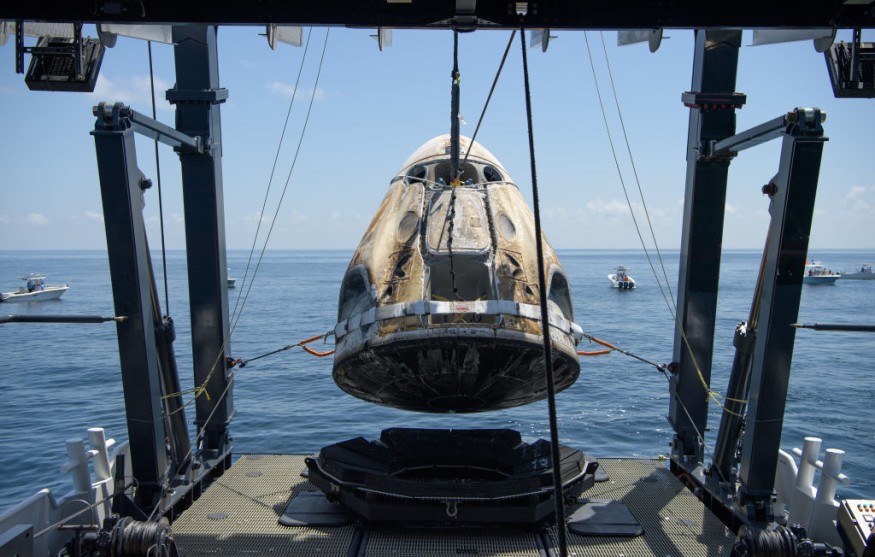At 5:19 a.m. EST on Wednesday, January 11, SpaceX's unmanned Dragon cargo spaceship splashed down off the coast of Tampa, Florida.
It marked the company's 26th contractual cargo resupply trip to the International Space Station (ISS). The spaceship returned to Earth with around 4,400 pounds of critical scientific experiments for NASA and other supplies.

SpaceX Resupply Mission to ISS
Commercial Resupply Services (CRS) are a series of trips given by NASA to privately operated spacecraft to deliver cargo and supplies to the International Space Station (ISS).
According to NASA, SpaceX's Dragon spacecraft was launched to the ISS for its 26th CRS mission from Kennedy Space Center in Florida on November 26, 2022, bringing several thousand pounds of important research, crew supplies, and hardware for the crew members.
The Dragon spaceship from SpaceX has entered its preliminary orbit, and its solar arrays have been deployed. Dragon rendezvous with the space station on Sunday, November 27, around 7:30 a.m., thanks to a sequence of thruster firings. EST. The docking was broadcasted live beginning at 6 a.m. EST on NASA's website.
NASA astronauts Josh Cassada and Nicole Mann used the space station's robotic arm to catch the Dragon spacecraft and placed it on its Harmony module. The Dragon spacecraft was tethered to the space station before its return on Wednesday.
READ ALSO : NASA Yeast Mission: Experiments on Artemis 1 to Help Astronauts Survive Cosmic Radiation
Scientific Experiments Returned by Dragon
After spending more than a month in the low-Earth orbit, attached to the ISS, the Dragon finally returned and brought home some scientific experiments. These include the following according to NASA:
- Vest for deep space radiation- Crew members aboard the space station wore the Astrorad vest while completing regular chores and offered input on how easy it is to put on, how it fits and feels, and how much range of motion it allows. The vest's researchers intend to utilize that feedback to enhance the design of the garment, which might provide radiation shielding for astronauts on Artemis trips to the Moon.
- Air-, and water-based plants from space- The eXposed Root On-Orbit Test System (XROOTS) employed hydroponic (water-based) and aeroponic (air-based) techniques to grow plants without soil or other growth media. Researchers gathered video and still photographs to assess growth chambers throughout the plant life cycle, from seed germination to maturity. The plant chambers are being returned to Earth for further examination, which might be used to improve agricultural and food security for humans on Earth.
- Space-based bioprospecting- The practice of discovering plants and animals that may contain compounds with the potential for use as medicines, biochemicals, and other substances is known as bioprospecting. Previous research has discovered that space can trigger genetic and physiological changes in bacteria, which can result in the production of such compounds. Rhodium Microgravity Bioprospecting-1 investigated a method for searching for these microorganisms. Researchers will conduct further investigation on the scientific chambers and temperature logger.
RELATED ARTICLE: Chile Peppers in Space: Why Is NASA Growing Spices in the ISS? What Does It Mean for Astronauts?
Check out more news and information on Space in Science Times.











